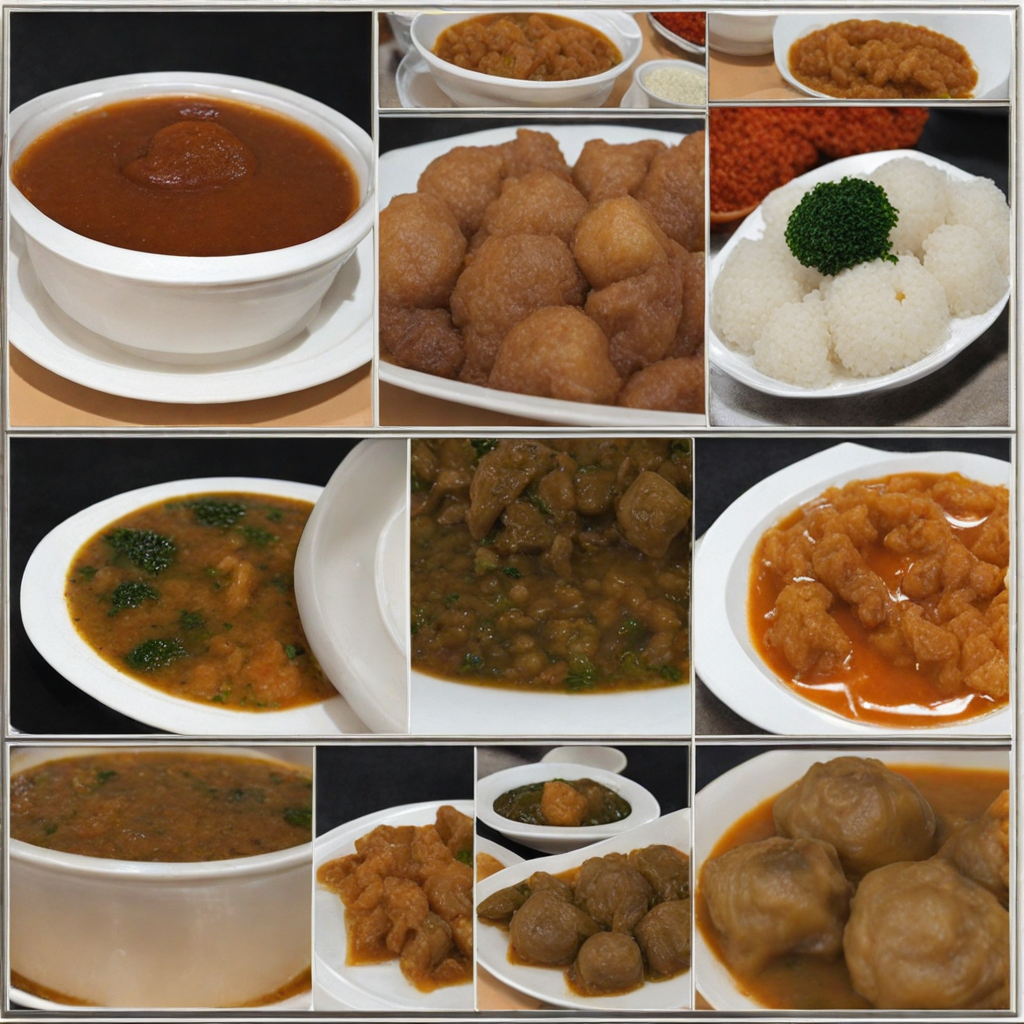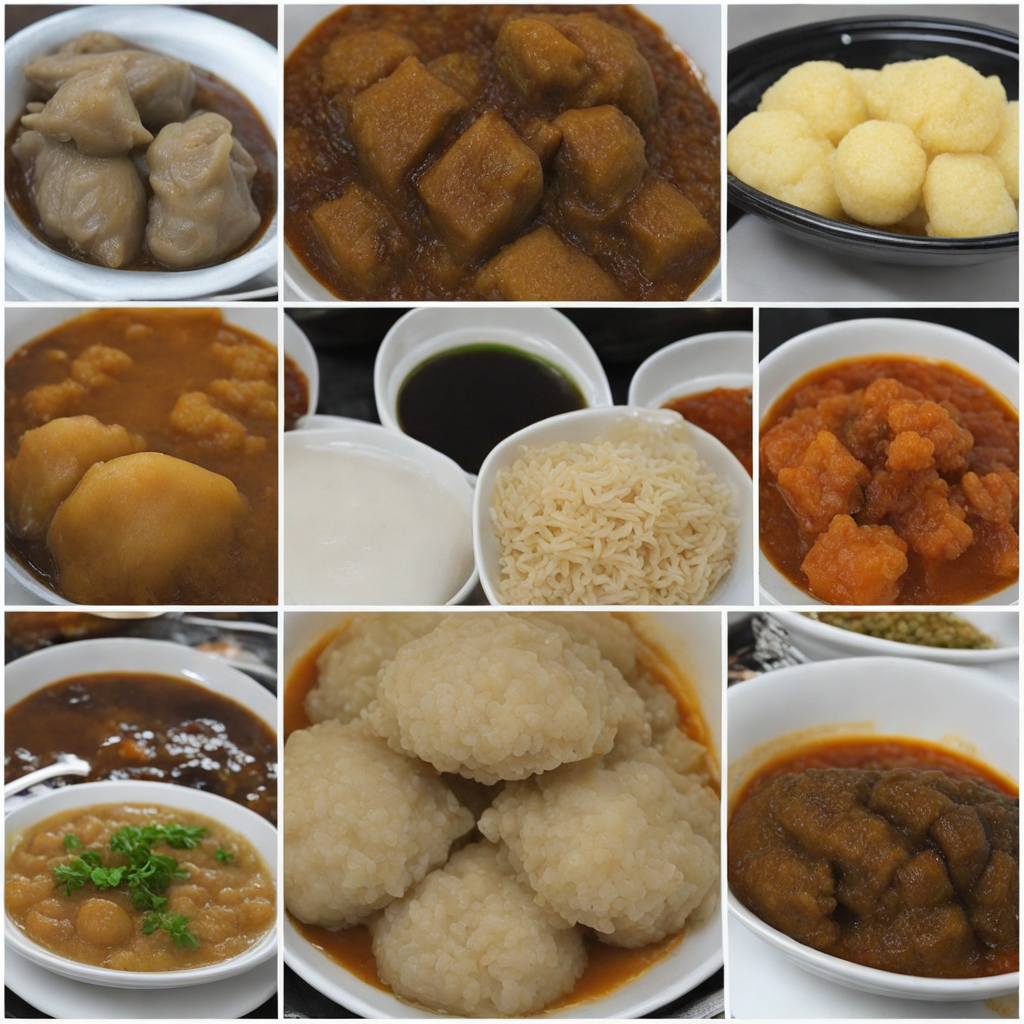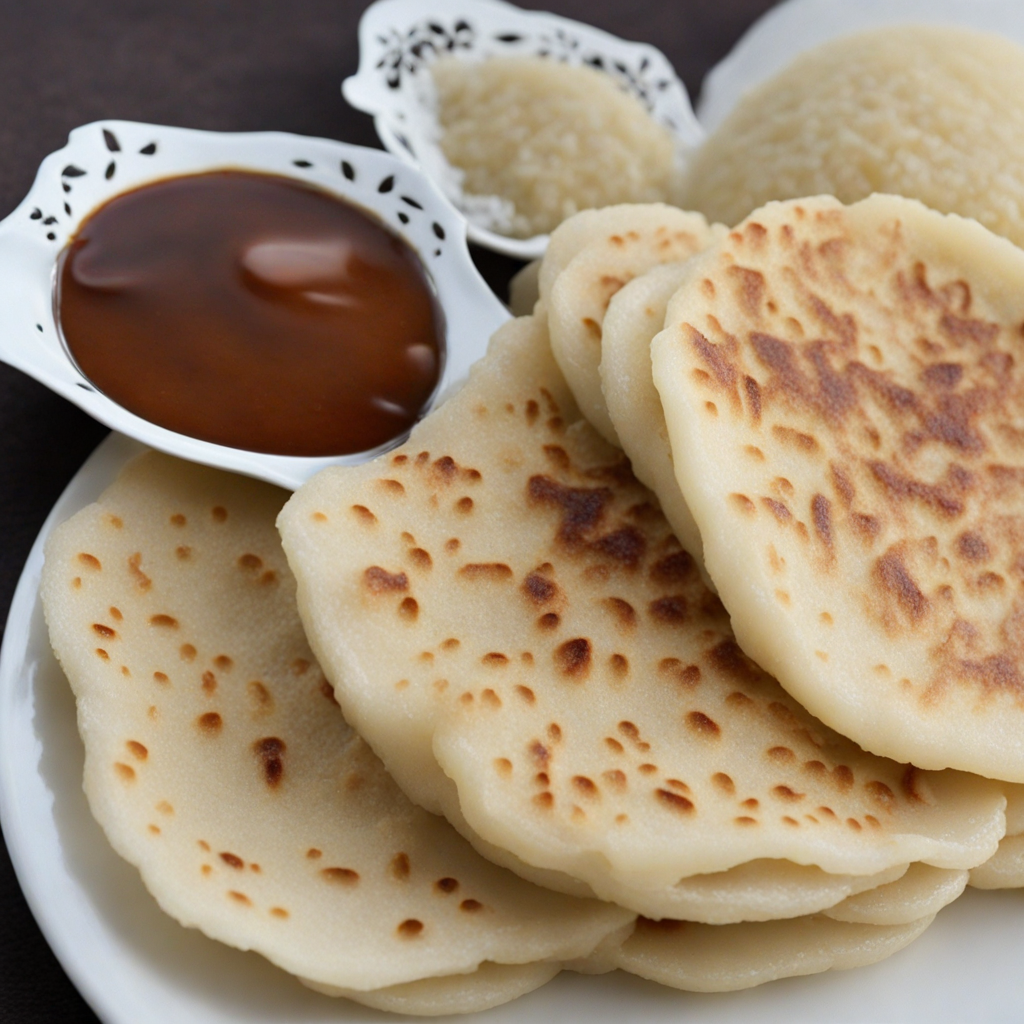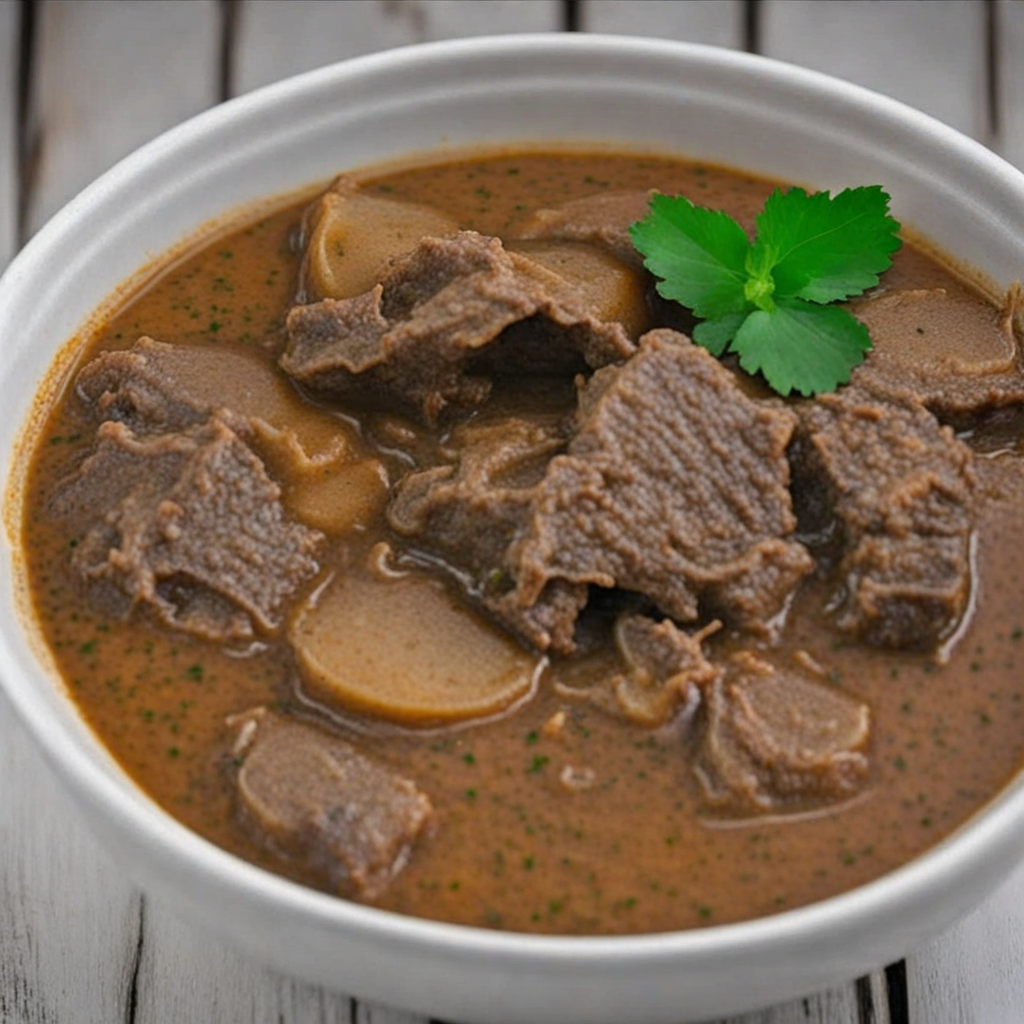Tuwo Shinkafa
Tuwo Shinkafa is a traditional Nigerian dish made primarily from rice, specifically a type known as 'short-grain rice.' The rice is cooked until it becomes soft and sticky, allowing it to be molded into a smooth, thick consistency. This unique texture makes it a perfect accompaniment for various soups and stews, providing a comforting and filling base that balances out the rich flavors of the dishes it is often served with. The process of preparing Tuwo Shinkafa involves boiling the rice until tender, then pounding it or stirring vigorously until it achieves a cohesive, dough-like form. One of the most delightful aspects of Tuwo Shinkafa is its versatility. While it is commonly enjoyed in the northern regions of Nigeria, it can be paired with a variety of soups, including the savory and spicy Miyan Kuka (baobab leaf soup) or the rich and hearty Miyan Taushe (pumpkin soup). The neutral flavor of the rice allows it to absorb the delicious spices and ingredients of the accompanying dishes, creating a harmonious blend of tastes. Diners often use their hands to scoop up the Tuwo, making each bite a tactile and engaging experience. In addition to its comforting texture and flavor, Tuwo Shinkafa holds cultural significance in Nigeria, often being served during communal gatherings and festivities. It symbolizes hospitality and togetherness, as families and friends come together to enjoy a meal. If you’re looking to explore new culinary experiences, Tuwo Shinkafa offers a taste of Nigerian culture that is both satisfying and full of character, inviting you to savor the rich traditions of West African cuisine.
How It Became This Dish
Tuwo Shinkafa: A Culinary Journey Through Nigeria’s Rich Heritage Tuwo Shinkafa, a staple dish in Northern Nigeria, is much more than just a meal; it embodies the rich cultural tapestry and historical evolution of the region. This traditional food made primarily from rice and often served with various soups and stews has deep roots in the agricultural practices and social customs of the Hausa people, one of Nigeria's largest ethnic groups. Origins and Historical Context The origins of Tuwo Shinkafa can be traced back to the early agricultural practices of the Hausa people, who have cultivated rice in the fertile valleys of Northern Nigeria for centuries. Historically, rice was introduced to West Africa through trade routes from Asia, and it quickly adapted to the local environment. The Hausa, known for their expertise in farming, began to cultivate various strains of rice, which became a staple in their diet. The term "Tuwo" refers to a soft, dough-like consistency that can be made from different grains, including maize and millet, but Tuwo Shinkafa specifically uses rice. The process of making Tuwo involves boiling rice until it becomes soft and then mashing it into a smooth, pliable form. Traditionally, this dish was prepared in communal settings, emphasizing the importance of family and community in Hausa culture. Cultural Significance Tuwo Shinkafa is more than just sustenance; it serves as a cultural symbol of hospitality and communal bonding. In many Hausa households, serving Tuwo Shinkafa to guests is a sign of respect and generosity. The dish is often accompanied by rich, flavorful soups—such as Miyan Kuka (baobab leaf soup) or Miyan Geda (a thick soup made from ground seeds)—that enhance its taste and nutritional value. During festive occasions, weddings, and religious celebrations, Tuwo Shinkafa takes center stage, showcasing its significance in communal gatherings. The preparation and sharing of this dish foster a sense of unity among families and friends, as it is often eaten by hand, encouraging a communal dining experience. The dish also reflects the socio-economic conditions of the Hausa people. As rice has become more accessible, Tuwo Shinkafa has evolved to incorporate various local ingredients and flavors, adapting to changing times and tastes. The availability of different types of proteins, vegetables, and spices has allowed for creative variations, making this dish versatile and representative of the region's culinary diversity. Evolution Over Time Historically, Tuwo Shinkafa was prepared using traditional methods, often over an open fire. However, as urbanization increased and modern cooking appliances became widely available, the preparation of Tuwo has transformed. While some households still adhere to traditional methods, many now utilize rice cookers and stoves, which save time and effort. The rise of global cultures and the influence of social media have further impacted the way Tuwo Shinkafa is perceived and consumed. Young Nigerians, especially those living in urban centers, have begun to experiment with the dish, incorporating elements from various cuisines. This fusion cuisine often includes the addition of ingredients like coconut milk or spices from other regions, resulting in innovative versions of the traditional dish. Furthermore, the growing interest in Nigerian cuisine on the international stage has propelled Tuwo Shinkafa into the spotlight. Nigerian diaspora communities have introduced this dish to a wider audience, leading to its inclusion in restaurants and food festivals outside Nigeria. This globalization of Tuwo Shinkafa not only celebrates its rich heritage but also highlights the adaptability of traditional foods in contemporary culinary landscapes. Regional Variations While Tuwo Shinkafa is most closely associated with the Hausa people, it has inspired several regional variations across Nigeria. For example, in the southern regions, similar rice-based dishes are often served with different soups and vegetable stews, showcasing the diverse culinary practices within the country. The variations reflect the local ingredients available, culinary techniques, and cultural influences unique to each region. Additionally, the dish’s preparation can vary significantly depending on the occasion. For everyday meals, Tuwo Shinkafa may be less elaborate, while for special events, it may be accompanied by a plethora of side dishes, including grilled meats and spicy condiments. This adaptability has allowed Tuwo to maintain its relevance in an ever-changing food landscape. Nutritional Aspects Nutritionally, Tuwo Shinkafa is a source of carbohydrates, providing energy essential for daily activities. When paired with nutrient-rich soups, it becomes a balanced meal that supplies proteins, vitamins, and minerals. The introduction of vegetables and legumes in the accompanying soups contributes to the overall health benefits, making Tuwo Shinkafa a nutritious option for families across Nigeria. In recent years, the global trend towards health-conscious eating has also influenced how Tuwo Shinkafa is prepared and served. There is an increasing emphasis on using organic ingredients, whole grains, and locally sourced produce. This shift reflects a broader understanding of nutrition and the importance of sustainable food practices. Conclusion Tuwo Shinkafa is not merely a dish; it is a vibrant symbol of Nigeria’s cultural heritage and culinary evolution. From its humble origins in the rice fields of Northern Nigeria to its present-day status as a beloved meal enjoyed by many, Tuwo Shinkafa encapsulates the essence of community, hospitality, and adaptability. As Nigeria continues to grow and evolve, so too will Tuwo Shinkafa. The dish stands as a testament to the resilience of traditional foods in the face of modernization and globalization. Whether enjoyed in a bustling city or a quiet village, Tuwo Shinkafa remains a cherished culinary treasure that connects generations and reflects the rich history of Nigeria’s diverse cultures.
You may like
Discover local flavors from Nigeria







